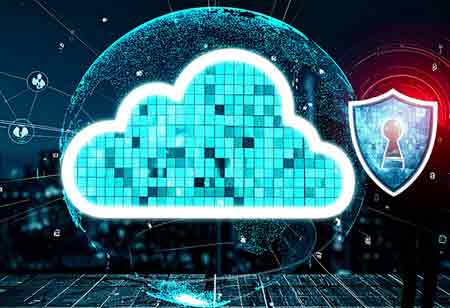THANK YOU FOR SUBSCRIBING
Be first to read the latest tech news, Industry Leader's Insights, and CIO interviews of medium and large enterprises exclusively from Gov CIO Outlook
THANK YOU FOR SUBSCRIBING

By
Government CIO Outlook | Thursday, July 03, 2025
Stay ahead of the industry with exclusive feature stories on the top companies, expert insights and the latest news delivered straight to your inbox. Subscribe today.
The modern enterprise relies heavily on Software as a Service (SaaS) applications to drive core operations, manage critical data, and facilitate global connectivity. Within this expansive landscape, a distinct category emerges: mission-critical SaaS. These are the applications upon which the very continuity and success of an organization hinge – systems managing financial transactions, sensitive customer data, intellectual property, operational control, and strategic planning. The security of such applications is not merely an IT concern; it is a fundamental business imperative.
The evolution of SaaS security has mirrored the rapid adoption and increasing sophistication of cloud services. Initially, the focus was mainly on the provider's infrastructure and basic application-level controls. However, as organizations increasingly entrusted their most vital functions to SaaS, a shared responsibility model became paramount. This model acknowledges that while the SaaS provider secures the underlying infrastructure and application, the customer retains significant responsibility for configuring the application, managing data within it, and interacting with it. This shift has necessitated a more comprehensive and proactive approach to mission-critical SaaS security.
Foundational Security Pillars
A robust security architecture for mission-critical SaaS begins with stringent Identity and Access Management (IAM). This foundational element ensures that only authorized individuals and systems can access sensitive data and functions. Implementing strong authentication mechanisms, such as multi-factor authentication (MFA), is non-negotiable. Beyond simple authentication, granular access controls — often based on the principle of least privilege — are crucial. This means users are granted only the minimum necessary permissions to perform their specific tasks, thereby limiting potential damage in the event of a compromise. Role-based access control (RBAC) and attribute-based access control (ABAC) frameworks play a vital role in systematically managing these permissions across diverse user populations. The continuous monitoring and auditing of user access and activities are also essential, providing visibility into who is accessing what, when, and from where.
Data security is another pillar of paramount importance. In mission-critical SaaS environments, data is often both at rest within the provider's infrastructure and in transit across networks. Comprehensive encryption strategies are therefore critical, as they safeguard data throughout its entire lifecycle. This includes robust encryption for data stored in databases and file systems, as well as secure protocols like TLS for data exchanged between users and the SaaS application, and between the application and integrated services. Data loss prevention (DLP) technologies are increasingly integrated to monitor, detect, and prevent the unauthorized movement or exposure of sensitive information within and from SaaS applications. Furthermore, robust data backup and disaster recovery capabilities, often managed collaboratively with the SaaS provider, are essential to ensure business continuity in the face of unforeseen incidents.
Securing the Application and Its Connections
Beyond access and data, the overall security posture of the SaaS application itself is vital. This involves continuous security assessments, including vulnerability scanning and regular penetration testing, to identify and remediate potential weaknesses. Application security encompasses the secure configuration of the SaaS environment, which involves the settings and parameters that define how the SaaS application operates and interacts with other systems. Ensuring that default settings are hardened and that any customization adheres to security best practices is crucial. Integrating security into the entire lifecycle of SaaS adoption, from initial evaluation to ongoing operation, helps to embed security considerations from the outset.Given the interconnected nature of modern IT ecosystems, securing integrations with other applications and services is also a critical component. Mission-critical SaaS applications rarely operate in isolation; they often exchange data with other internal systems, third-party services, and customer-facing platforms. Each integration point represents a potential vector for attack, necessitating careful vetting of integration partners, secure API management, and continuous monitoring of data flows between connected systems.
Governance, Compliance, and Future Outlook
Compliance and governance form a crucial overlay for mission-critical SaaS security. Organizations operating in regulated industries must adhere to a complex web of standards and regulations, such as those related to data privacy, financial reporting, and industry-specific mandates. Ensuring that the SaaS environment and the organization's use of it meet these regulatory requirements is an ongoing responsibility. This involves meticulous documentation of security controls, regular audits, and the ability to demonstrate compliance to external bodies. Effective governance also involves defining clear policies for SaaS usage, data handling, and incident response, and ensuring that these policies are communicated and consistently enforced throughout the organization.
Mission-critical SaaS security is constantly evolving. The increasing adoption of advanced analytical capabilities and machine learning within security tools is enhancing threat detection and response capabilities, enabling more proactive identification of anomalous behaviors and potential threats. The principle of Zero Trust, which dictates that no user or device, whether internal or external, should be inherently trusted, is gaining significant traction. This model drives more stringent authentication and authorization at every access point, regardless of network location. As the complexity of SaaS ecosystems continues to grow, there will be an even greater emphasis on automated security posture management, providing continuous visibility and control over SaaS configurations and user access. The focus will remain on building resilience and ensuring uninterrupted operations for the critical applications that power the digital enterprise.
I agree We use cookies on this website to enhance your user experience. By clicking any link on this page you are giving your consent for us to set cookies. More info



